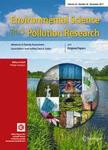版权所有:内蒙古大学图书馆 技术提供:维普资讯• 智图
内蒙古自治区呼和浩特市赛罕区大学西街235号 邮编: 010021

作者机构:Technology Management Economics and Policy Program College of Engineering Seoul National University 1 Gwanak-Ro Gwanak-Gu Seoul08826 Korea Republic of Department of Economics Ilam University Ilam Iran Department of Economic and Management Urmia University Urmia Iran Department of Korean Language Education College of Education Seoul National University 1 Gwanak-Ro Gwanak-Gu Seoul08826 Korea Republic of Department of Environment and Energy Sejong University Seoul05006 Korea Republic of
出 版 物:《Environmental Science and Pollution Research》 (Environ. Sci. Pollut. Res.)
年 卷 期:2024年第31卷第25期
页 面:37777-37789页
核心收录:
学科分类:0830[工学-环境科学与工程(可授工学、理学、农学学位)] 08[工学] 0807[工学-动力工程及工程热物理] 0714[理学-统计学(可授理学、经济学学位)] 0701[理学-数学]
主 题:Energy utilization
摘 要:Employing robust methodologies, including principal component analysis, autoregressive moving average, Fourier bootstrap dynamic autoregressive distributed lag, error correction model, and the Breitung–Candelon spectral Granger causality test, this study scrutinizes the impact of export diversification (EXD) on Iran’s ecological footprint (EF) from 1997 to 2020, considering economic sanctions (ESI), trade openness (TOP), energy consumption per capita (ECpc), globalization (KOF), and real GDP per capita (RGDPpc). Findings consistently affirm a positive environmental impact of EXD, revealing a nuanced temporal pattern. Notably, the short-term impact (− 0.645) is more pronounced than its long-term counterpart (−.020). Increased industrial activities due to globalization (10% rise) lead to 4.26% and 1.64% EF degradation in the long and short term. Conversely, due to Iran’s heavy reliance on fossil fuels, a 10% rise in ECpc correlates with 1.63% and 3.81% long- and short-term environmental quality reduction. ESI demonstrates a dual impact, improving short-term environmental quality but contributing to long-term degradation. Frequency-domain causality analysis highlights EXD and KOF as short- and long-term causes of EF, ESI, and TOP as medium- to long-term causes and RGDPpc as a long-term cause. These findings emphasize the need for sustainable policies, stringent environmental standards, and a balanced approach to fostering economic growth while preserving the environment. Graphical Abstract: (Figure presented.) © The Author(s), under exclusive licence to Springer-Verlag GmbH Germany, part of Springer Nature 2024.